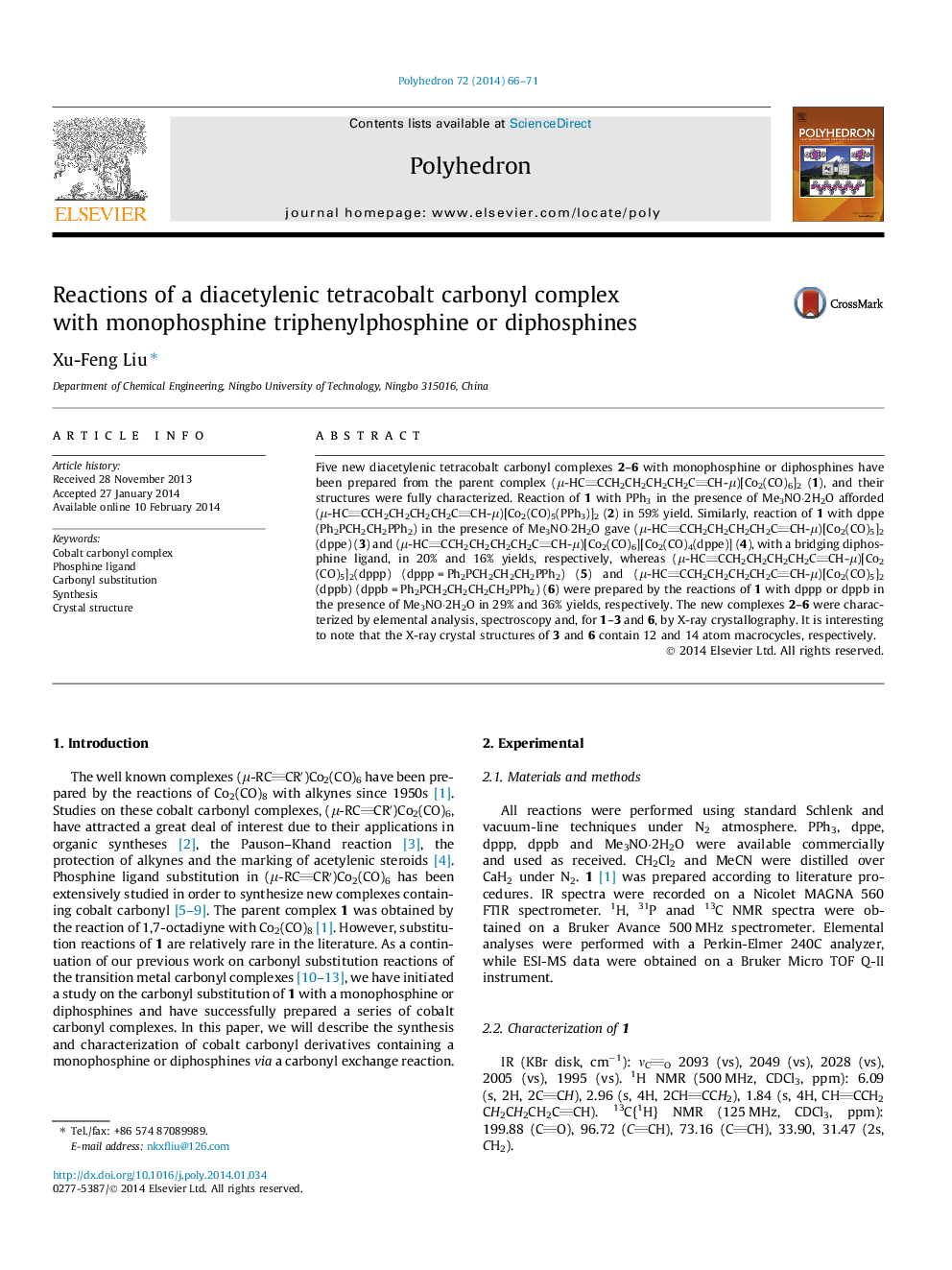| Article ID | Journal | Published Year | Pages | File Type |
|---|---|---|---|---|
| 1335403 | Polyhedron | 2014 | 6 Pages |
Five new diacetylenic tetracobalt carbonyl complexes 2–6 with monophosphine or diphosphines have been prepared from the parent complex (μ-HCCCH2CH2CH2CH2CCH-μ)[Co2(CO)6]2 (1), and their structures were fully characterized. Reaction of 1 with PPh3 in the presence of Me3NO·2H2O afforded (μ-HCCCH2CH2CH2CH2CCH-μ)[Co2(CO)5(PPh3)]2 (2) in 59% yield. Similarly, reaction of 1 with dppe (Ph2PCH2CH2PPh2) in the presence of Me3NO·2H2O gave (μ-HCCCH2CH2CH2CH2CCH-μ)[Co2(CO)5]2(dppe) (3) and (μ-HCCCH2CH2CH2CH2CCH-μ)[Co2(CO)6][Co2(CO)4(dppe)] (4), with a bridging diphosphine ligand, in 20% and 16% yields, respectively, whereas (μ-HCCCH2CH2CH2CH2CCH-μ)[Co2(CO)5]2(dppp) (dppp = Ph2PCH2CH2CH2PPh2) (5) and (μ-HCCCH2CH2CH2CH2CCH-μ)[Co2(CO)5]2(dppb) (dppb = Ph2PCH2CH2CH2CH2PPh2) (6) were prepared by the reactions of 1 with dppp or dppb in the presence of Me3NO·2H2O in 29% and 36% yields, respectively. The new complexes 2–6 were characterized by elemental analysis, spectroscopy and, for 1–3 and 6, by X-ray crystallography. It is interesting to note that the X-ray crystal structures of 3 and 6 contain 12 and 14 atom macrocycles, respectively.
Graphical abstractThe five diacetylenic tetracobalt carbonyl complexes 2–6, bearing monophosphine or diphosphine ligands, were prepared by the reactions of the complex (μ-HCCCH2CH2CH2CH2CCH-μ)[Co2(CO)6]2 (1) with PPh3, dppe, dppp or dppb. The new complexes were characterized by elemental analysis, spectroscopy and, in some cases, by single-crystal X-ray diffraction analysis.Figure optionsDownload full-size imageDownload as PowerPoint slide
